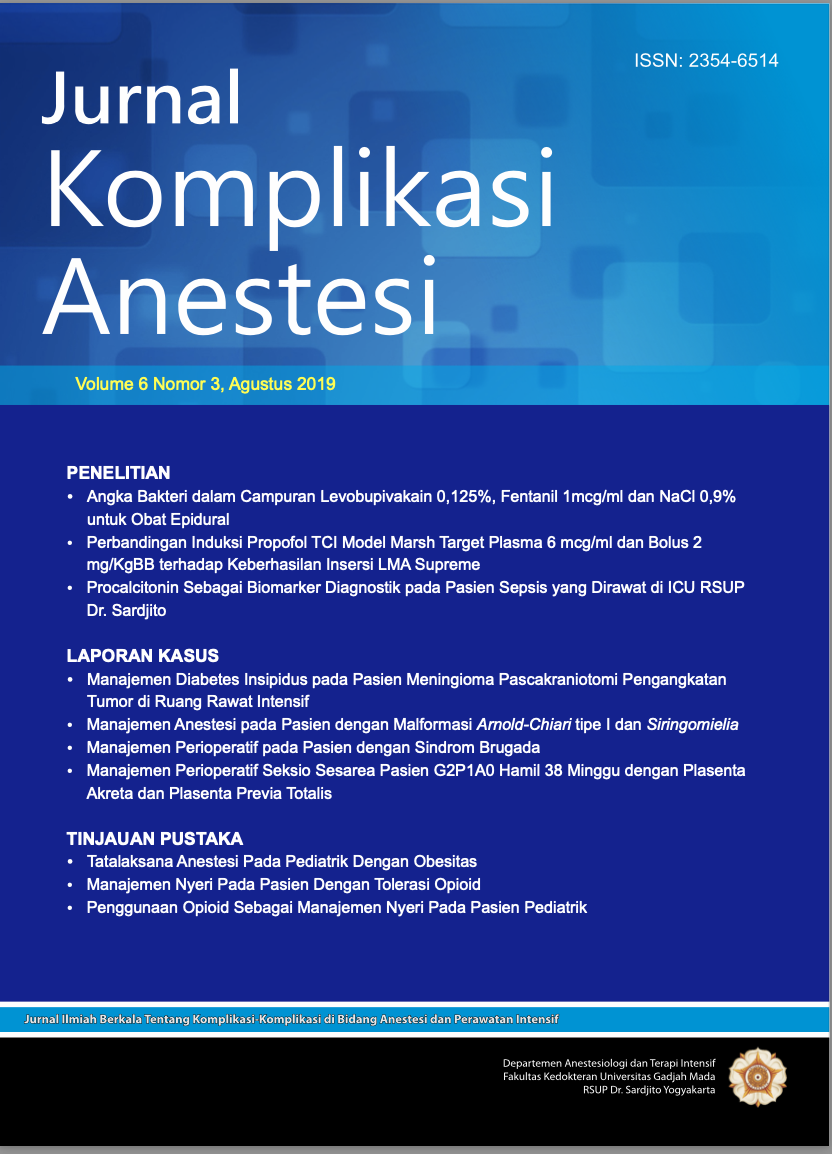Manajemen Perioperatif Seksio Sesarea Pasien G2P1A0 Hamil 38 Minggu dengan Plasenta Akreta dan Plasenta Previa Totalis
Abstract
Placenta accreta is becoming more common and is the most frequent indication for peripartum hysterectomy. Management of cesarean delivery in the setting of a morbidly adherent placenta has potential for massive hemorrhage, coagulopathies, and other morbidities. Anesthetic management of placenta accreta presents many challenges including optimizing surgical conditions, providing a safe maternal delivery, preparing for massive hemorrhage and transfusion, preventing coagulopathies, and optimizing postoperative pain control. Balancing these challenging goals requires meticulous preparation with a thorough preoperative evaluation of the parturient and a well-coordinated multidisciplinary approach in order to optimize outcomes for the mother and fetus.

Copyright (c) 2019 Ratih Kumala Fajar A, Akhmad Yun Jufan, Kusuma Edhi Kuncoro

This work is licensed under a Creative Commons Attribution-NonCommercial-ShareAlike 4.0 International License.
The Contributor and the company/institution agree that all copies of the Final Published
Version or any part thereof distributed or posted by them in print or electronic format as permitted herein will include the notice of copyright as stipulated in the Journal and a full citation to the Journal.
















